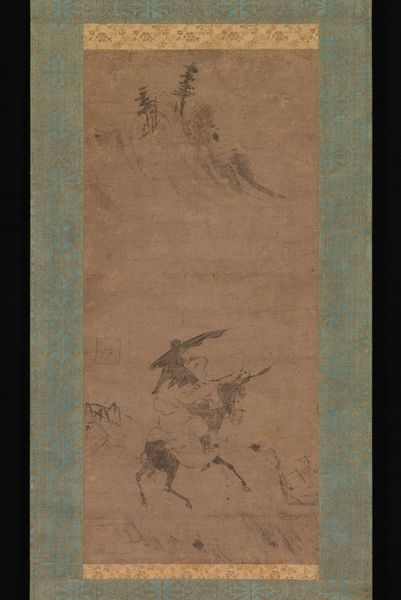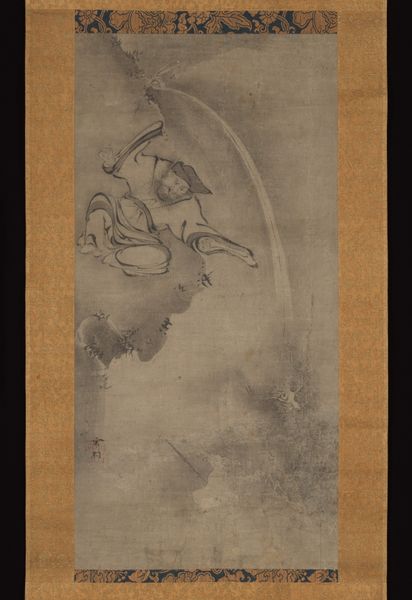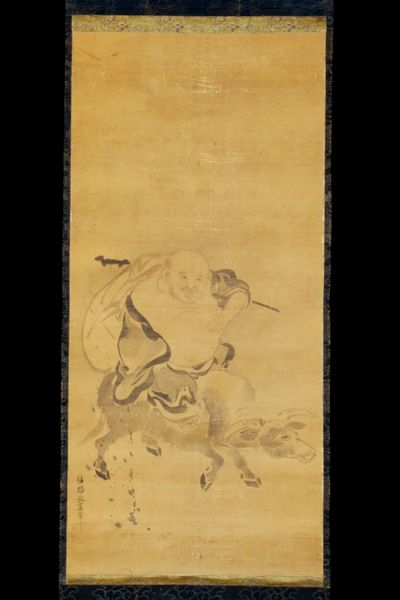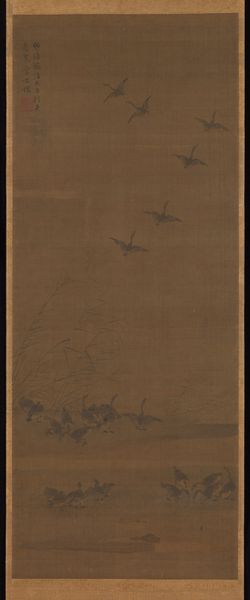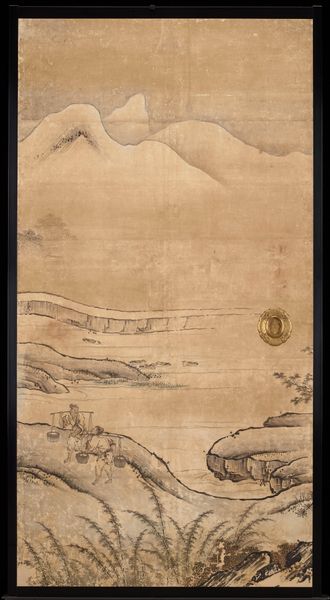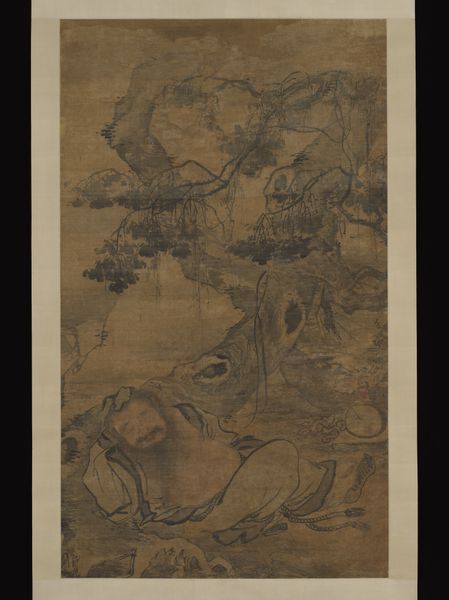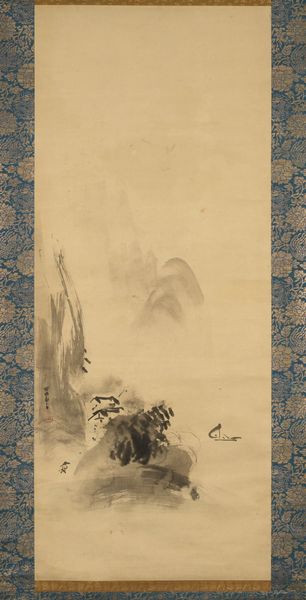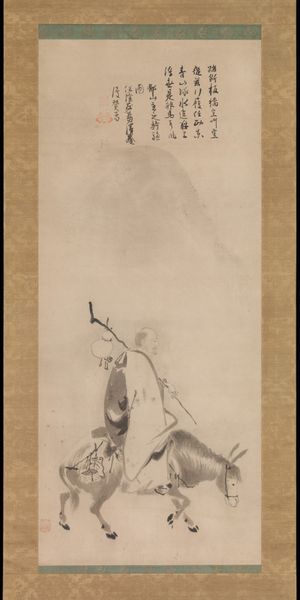
drawing, ink
#
drawing
#
medieval
#
asian-art
#
landscape
#
figuration
#
ink
#
watercolor
Dimensions: Image: 19 11/16 × 11 5/8 in. (50 × 29.5 cm) Overall with mounting: 53 11/16 × 14 7/16 in. (136.4 × 36.6 cm)
Copyright: Public Domain
This monochrome ink painting on silk, "Herdboys and Buffalos," was created by the artist Kaō in Japan during the Kamakura period, sometime between 1245 and 1345. The painting depicts two boys riding on the backs of buffalos in a sparse landscape. The image reflects the influence of Zen Buddhism, which emphasized simplicity and spontaneity, and its focus on subjects drawn from everyday life. Kaō was a Zen Buddhist priest, and his artistic style reflects the values of that institution. The choice of subject matter—humble herdboys—may reflect a conscious rejection of the courtly culture that dominated Japanese painting in earlier periods. Note that this artwork avoids ostentation. The buffalos are rendered with quick, informal brushstrokes, suggesting the artist valued capturing the essence of the subject over meticulous detail. To better understand this work, we can explore the history of Zen Buddhism in Japan and the social role of temples like the one where Kaō lived and worked. The study of art in its social and institutional context can reveal a great deal about its meaning.
Comments
No comments
Be the first to comment and join the conversation on the ultimate creative platform.
